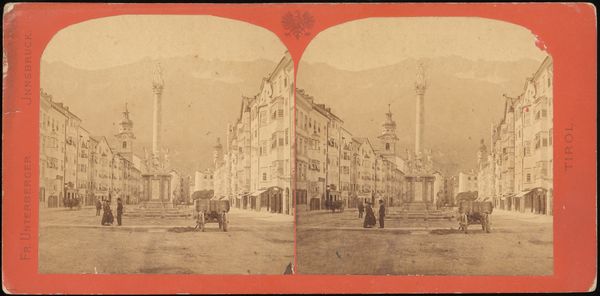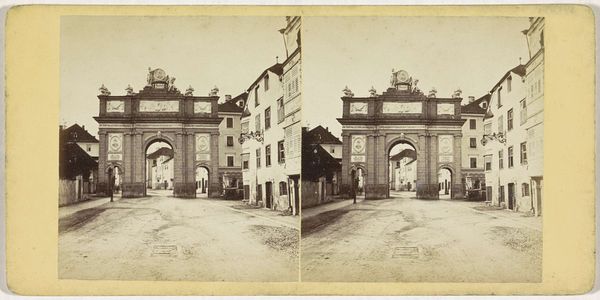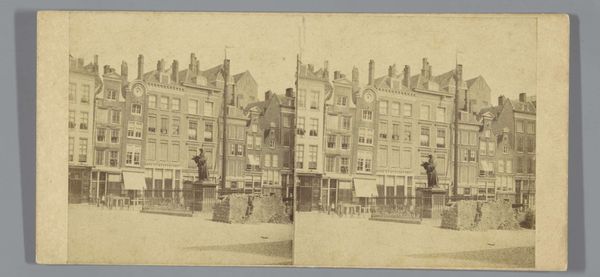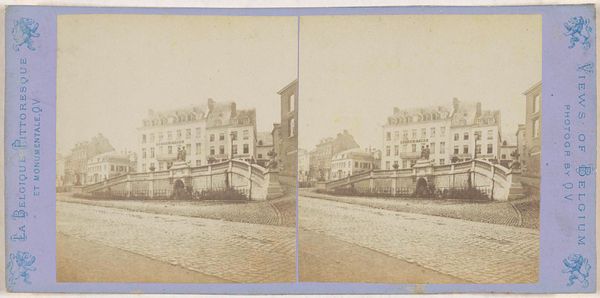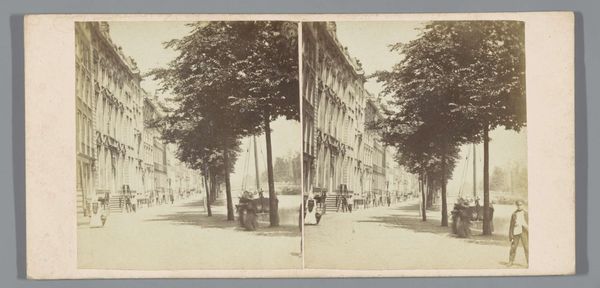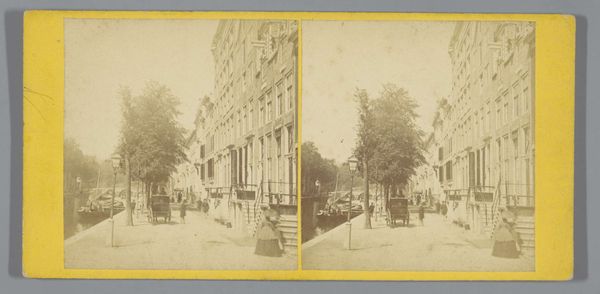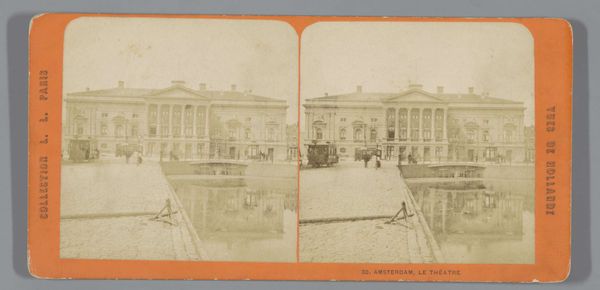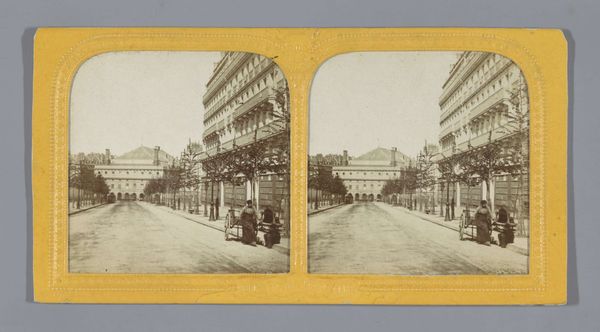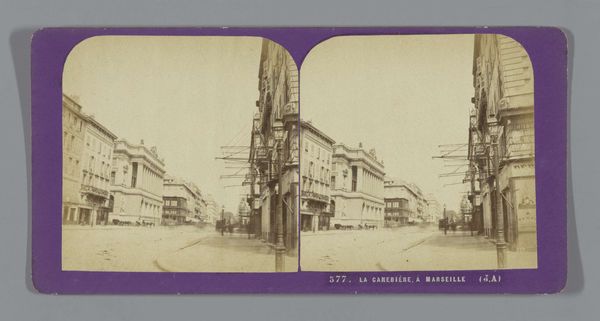
print, photography, albumen-print
#
pictorialism
# print
#
neo-impressionism
#
street-photography
#
photography
#
cityscape
#
albumen-print
Dimensions: height 88 mm, width 178 mm
Copyright: Rijks Museum: Open Domain
Andreas Theodorus Rooswinkel made this stereoscopic albumen print of the Schreierstoren and the Prins Hendrikkade in Amsterdam using a camera, photographic paper and darkroom chemicals. The albumen process involved coating paper with egg white and then silver nitrate, making it sensitive to light. Placing the negative of the image on this prepared paper, the artist exposed it to sunlight, creating a positive print. The albumen gives the print its distinctive glossy surface and rich tonal range, crucial in conveying the scene's details, from the texture of the brickwork to the reflections on the canal. Stereoscopic prints like this were very popular in the 19th century. The dual image, when viewed through a stereoscope, creates an illusion of depth, offering viewers an immersive experience of the photographed scene. This mass production of images also marks an important moment in the history of photography, reflecting broader shifts in labor, politics, and consumption during this period. Paying attention to the materials, making, and context of photography, challenges us to rethink the traditional distinctions between craft and fine art.
Comments
No comments
Be the first to comment and join the conversation on the ultimate creative platform.
